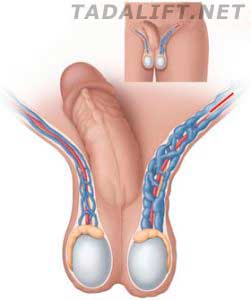Abnormal work or development of the scrotal veins may result in worsening of the blood outflow from the organ thus leading to varicocele. Actually, Varicocele is an enlarged vein in the male scrotum which may be compared to the varicose vein.
The exact causes of such an abnormality are not clear. The issue is characteristic of male teenagers and men of 15-25 years old.The statistics say that 20% of adolescents and 15% of adult males are affected by varicocele.
What may signal about varicocele?
The specificity of varicocele is that it may go without symptoms. Nevertheless, you may find out about the problem when you touch the scrotum. Varicocele may be felt like a bag with worms. Based on the seriousness of the condition, you may have three grades of the disease, where the first one is the lightest form and the third grade is the most severe.
Regardless of the grade of the illness, you may experience the following symptoms:
- Dull pain in the scrotum, which may change to acute in some periods;
- Swelling or enlargement of the scrotum;
- Noticeably enlarged scrotal veins;
- Slower development of the left testicle;
- A lump in one of the testicles.
Speaking about the last symptom, it should be mentioned that varicocele commonly affects the left side of the scrotum as the anatomy of the two sides of the scrotum is different. Cases of varicocele on both sides of the organ are extremely rare.
Your doctor may suspect this kind of problem in case you have difficulties with fertilizing women. As varicocele develops gradually, you may be not only initially infertile but also suffer from secondary infertility. It happens because the disease has a significant impact on the count and motility of the sperm.
How can varicocele be treated?
Even though varicocele is a disease, it may be left untreated in case it doesn’t induce any annoying symptoms. However, in some situations this intimate problem should be cured, for example:
- If you cannot conceive a child because of varicocele-induced infertility;
- If you are an adolescent whose testicle doesn’t develop the way it should;
- If you feel pain in the scrotum.
There are no options for medicinal therapy of this disease. The treatment of varicocele is possible only with a help of surgery. However, you may choose one of the low-invasive methods and be able to get back to a normal life in a day or two after being operated on.

